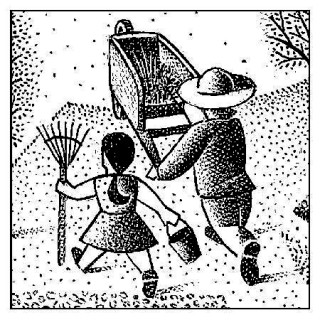Read an excerpt from this article below. You can download the full article by using the link at the end of the excerpt.
A community food assessment is just what it sounds like — an appraisal of a community’s food system, helping to identify assets as well as needs. “It’s a systematic process examining food-related issues,” says Raquel Bournhonesque from the Community Food Security Coalition (CFSC), an organization working on local and regional food system issues across the U.S. and Canada.
Mark Winne, one of CFSC’s founders and its communication director, was for 25 years executive director of the Hartford (Connecticut) Food System, a private, nonprofit focusing on hunger issues. In the early 1990s, HFS met with the heads of all city departments and asked them, “How do you address food needs and nutrition?”
“First they’d stare at you blankly,” Winne says. “But then after asking some leading questions we found out that most of them actually were doing some kind of work that related to food. It’s just that the consciousness was lacking.”
Today, he adds, there is a growing awareness of city government’s role in food needs, and that those needs encompass more than just the obvious, like healthy school meals. “City governments are beginning to see that land use affects an area’s ability to provide fresh, healthy food to its residents. Twenty-five years ago there was no understanding at all.”
HFS conducted ongoing assessments of their community’s food needs, “before anyone came up with the name ‘community food assessment,'” Winne says. “We were constantly looking at prices, transportation, land use decisions, schools, and food pantries. Basically all the ways that people could get food and that the quality and price of food could be affected.”
At least two of their findings led to changes at the city level. First, HFS found a lack of food outlets — including supermarkets and farmer’s markets — inside Hartford proper. Winne brought that information to the city, and Hartford officials made a commitment to bring food stores back into the city limits through community development work.
In addition, HFS created a detailed view of how people in low income neighborhoods were getting to food stores. “We conducted interviews with people, sat down with maps of bus lines, and mapped area stores,” Winne says. “We found a dysfunctional relationship between public transportation and food outlets. As a result of that information, and advocacy, we got a new bus route established that took people from the lowest income neighborhood directly to a new suburban grocery store.”
Food assessments, stresses Bournhonesque of the CFSC, “should be done at the neighborhood level and be very participatory.”

In Fresno County, California, the Fresno Metro Ministry, an active interfaith organization founded in 1970, took the lead in conducting a countywide food assessment. “We worked with local community leaders to find out what they wanted to know,” says Edie Jessup, Fresno Metro Ministry’s hunger and nutrition program coordinator. “The community was adamant that they wanted to retain qualitative data.”
To that end, over 80 neighborhood leaders conducted more than 850 surveys of residents — and 131 surveys of retail stores. “We had people looking at their own neighborhoods,” Jessup says, “and it gave us people to go back to once the survey was done.”
End of excerpt
You must be logged in or a PlannersWeb member to download this PDF.